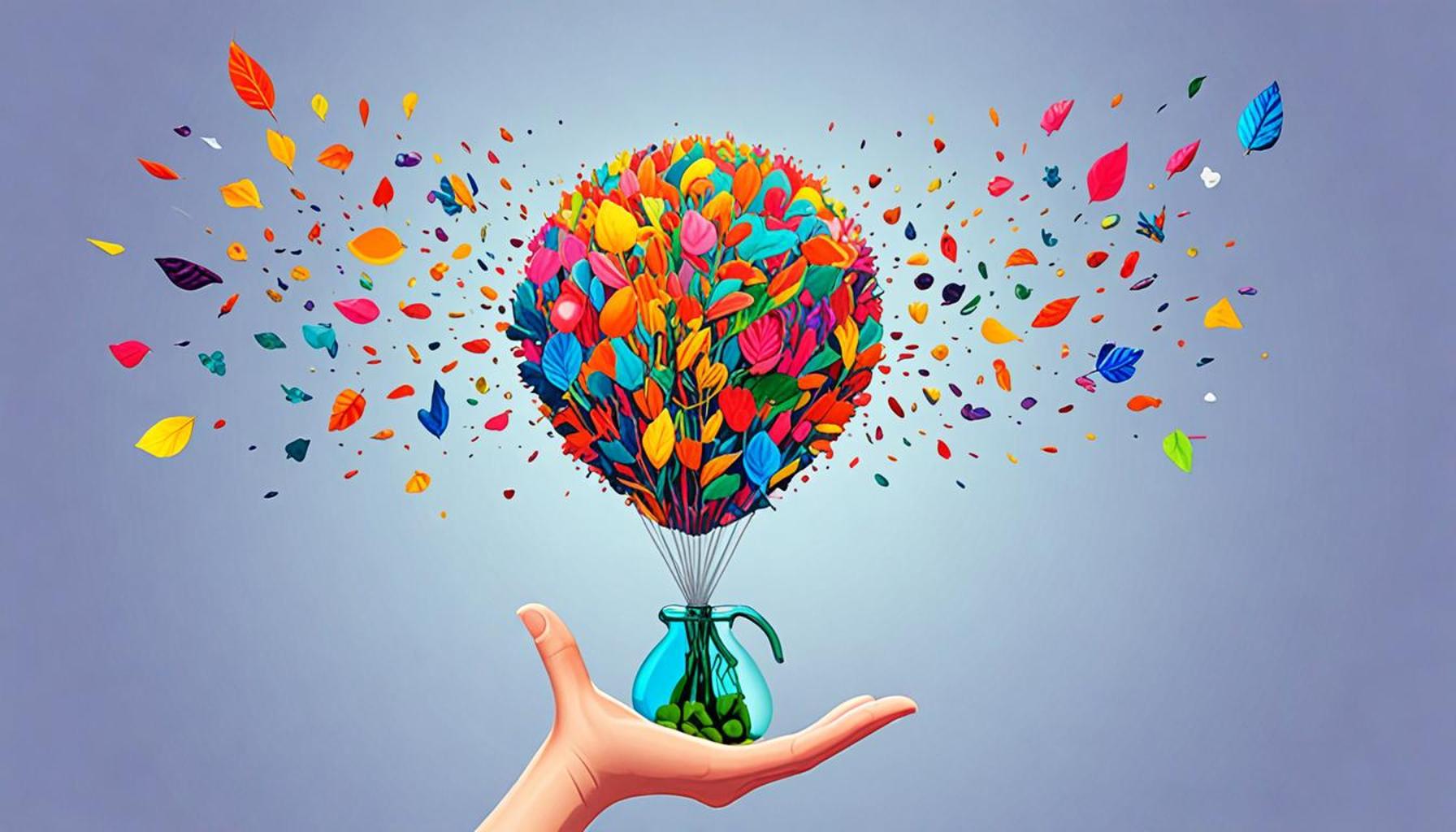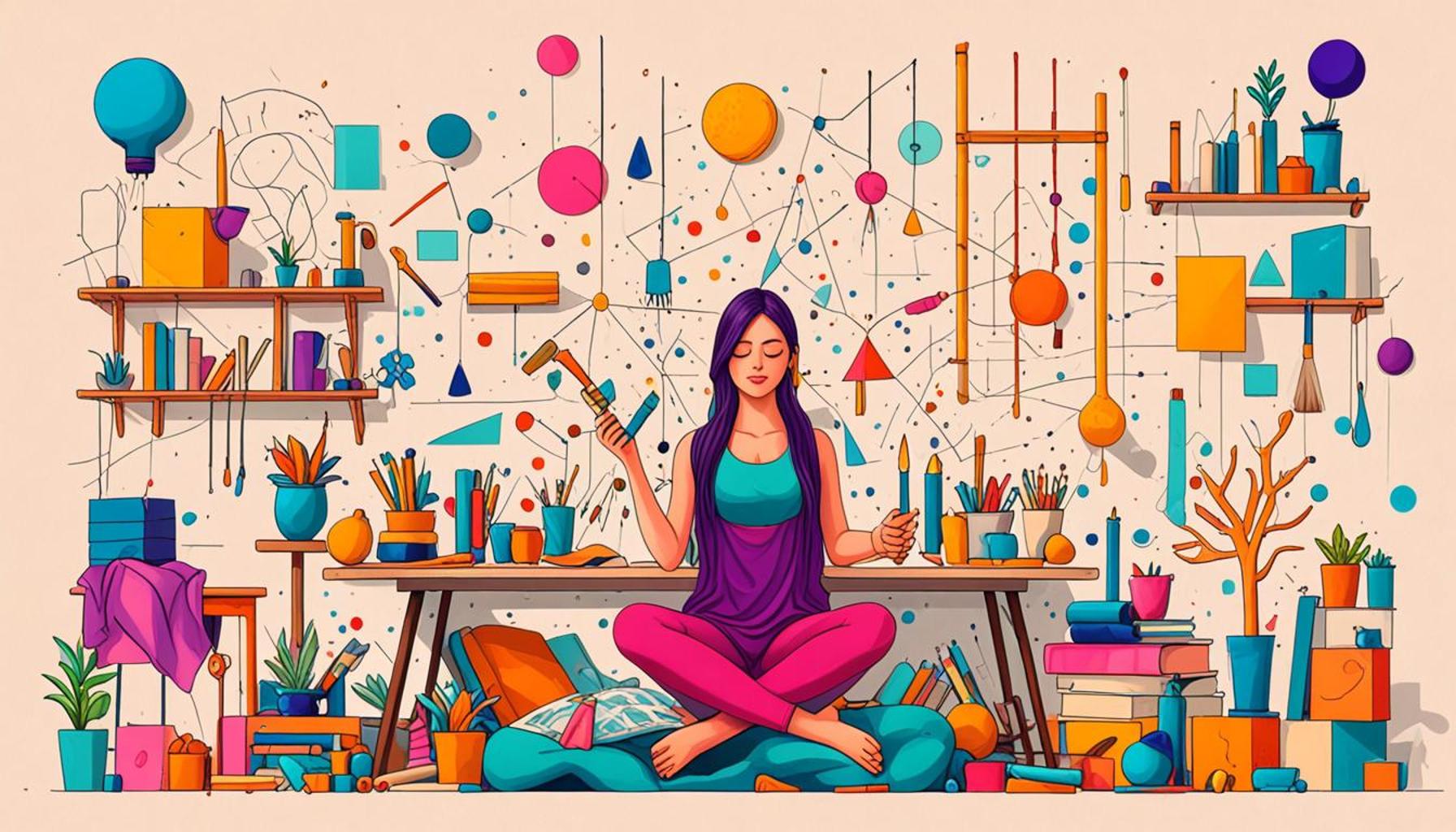Creating a Mindful Work Environment: Tips for Personal Organization that Promotes Mental Clarity

Embrace Mindfulness in Your Workspace
In today’s fast-paced world, achieving mental clarity can feel like an elusive goal. The constant barrage of emails, notifications, and deadlines can cloud our focus and diminish our productivity. However, by fostering a mindful work environment, we can reclaim our attention and enhance our organizational skills. Mindfulness is not just a buzzword but a powerful approach that can lead to profound improvements in our work life.
Creating a space that encourages mindfulness involves several key components:
- Decluttering: To enhance focus, begin by removing unnecessary items from your workspace. A clean desk can drastically improve concentration and minimize distractions. Research suggests that clutter can lead to feelings of anxiety and stress, which in turn affects your overall productivity.
- Designing for Comfort: Choose ergonomically-designed furniture that promotes good posture. A supportive chair and an appropriately positioned desk can prevent physical discomfort that often detracts from our ability to concentrate. Adjusting your workspace to suit your physical needs is essential to keeping your mind clear and focused.
- Incorporating Nature: Use plants and natural elements to improve air quality and bring a sense of calm to your surroundings. Studies have shown that having greenery around not only enhances the aesthetic appeal of your workspace but can also boost creativity and mood. Simple houseplants, such as succulents or snake plants, can thrive with minimal maintenance, making them ideal for office environments.
By implementing these practices, you can cultivate a workspace that supports clear thinking and better decision-making. Moreover, the benefits extend beyond aesthetics; a mindful work environment can lead to significant outcomes, including:
- Reduced stress levels—mindfulness practices can lower cortisol, the stress hormone, helping you respond to challenges more calmly.
- Enhanced creativity and innovation—when your mind is free from clutter and stress, it can generate new ideas and solutions more easily.
- Improved job satisfaction—individuals who work in mindful environments often report feeling more engaged and fulfilled in their jobs.
As you embark on this journey to transform your workspace, remember that even small adjustments can make a significant impact. For instance, setting aside five minutes each morning for a quick meditation can set a positive tone for your day. Consider also using apps designed to support mindfulness, which can guide you through focused breathing exercises during work breaks.
Let’s explore actionable tips and strategies that will not only organize your surroundings but also elevate your mental well-being. Embrace the mindfulness movement—not just as a trend, but as a way to enhance your professional and personal life in meaningful ways.

DIVE DEEPER: Click here to discover how mindfulness can enhance your minimalist journey
Organizational Strategies to Foster Mindfulness
Creating a mindful work environment goes beyond a tidy desk and ergonomic chair; it requires intentional organizational strategies that cultivate mental clarity throughout the day. By implementing structured routines and thoughtful practices, individuals can sustain focus and enhance their overall work experience. Here are some effective strategies to help promote a mindful workspace:
- Establishing Daily Routines: Consistency is key in developing mindfulness. Establishing a daily routine allows you to create predictability in your workday. Start each day with a designated time for planning or prioritizing tasks. One effective approach is the Pomodoro Technique, wherein work sessions are segmented into intervals—typically 25 minutes of focused work followed by a 5-minute break. This technique not only provides structured focus periods but also encourages regular mental rest, making it easier to recharge your mind and sustain productivity throughout the day. Consider using a timer or an app to help maintain this rhythm, and witness the difference it can make in your concentration levels.
- Utilizing Organizational Tools: Leverage digital tools and applications designed to enhance organization. Software like Trello or Asana can assist with task management, providing visual representations of your workload and deadlines. These platforms encourage accountability and help declutter your mental space by laying out tasks clearly. For instance, setting up Kanban boards in Trello allows users to visualize their tasks as they move from ‘To Do’ to ‘In Progress’ and finally to ‘Completed’, facilitating a sense of accomplishment and clarity. With added features such as reminders and collaborative capabilities, these tools can significantly streamline both individual and team workflows.
- Setting Boundaries: Creating a mindful work environment also involves setting boundaries between work and personal life. Designate specific times for checking emails and responding to messages. This practice prevents constant interruptions that can disrupt flow and create anxiety. For example, try limiting email checks to a few designated slots during the day rather than continuously monitoring your inbox. Communicating your availability not only sets expectations with colleagues but also protects your mental bandwidth, allowing you to focus on high-priority tasks without distractions.
- Employing Mindful Breaks: Incorporate short, mindful breaks into your day. Brief moments of stillness, stretching, or a short walk can help to refocus your mind and prevent burnout. Research indicates that stepping away from work for just five minutes—especially in natural outdoor settings—can significantly decrease mental fatigue and boost creativity. Apps like Headspace or Calm offer guided breathing exercises that can be done in just a couple of minutes, promoting mental clarity and reducing stress during the day.
By embracing these organizational strategies, you can pave the way for a more mindful work experience. A well-structured approach not only contributes to heightened focus but also fosters a sense of control over your workload, minimizing potential stressors. The cumulative effect of mindfulness practices can lead to better emotional regulation, enhancing your ability to navigate challenges with increased resilience.
Consider incorporating these practices gradually into your routine, observing which resonate most with you. The goal is to find a balanced system that complements your unique work style while promoting mental clarity. As you explore these methods, remember that the essence of creating a mindful work environment lies in self-awareness and intention—essential components for achieving peak performance and satisfaction in your professional life. Taking the time to implement these strategies not only helps in professional development but can also significantly improve your overall well-being, fostering a healthier approach to work and life.
| Category | Key Features |
|---|---|
| Clutter Management | Organizing physical and digital spaces to reduce distractions and enhance focus. |
| Time Blocking | Allocating specific time slots for tasks to improve time management and mental clarity. |
| Meditation and Mindfulness | Implementing short breaks for meditation to refresh the mind and reduce stress levels. |
| Productivity Tools | Utilizing apps and tools that enhance focus and keep personal organization on track. |
Creating a mindful work environment is not just about aesthetics; it’s about fostering habits that lead to increased mental clarity and productivity. Clutter management plays a pivotal role in this journey. By clearly defining both your physical workspace and your digital organization, you can significantly reduce cognitive overload, allowing for sharper focus on the tasks that matter most. Furthermore, the practice of time blocking can facilitate a structured approach to work; dedicating specific time slots to focus on priority tasks empowers individuals to maintain their concentration longer.Moreover, incorporating meditation and mindfulness breaks into your workflow can prove transformative. Even a few minutes of mindful breathing or meditation can replenish your mental energy and decrease anxiety. This simple practice lays the groundwork for enhanced productivity. Lastly, utilizing productivity tools can streamline your efforts and foster a sense of accomplishment as you tick items off your organized to-do lists. Explore how these strategies, when combined, can lead to an environment where mental clarity thrives and allows for more fulfilling work experiences.
DIVE DEEPER: Click here to discover more
Maximizing Your Mindful Workspace
Beyond just personal organizational methods, the physical workspace itself plays a crucial role in enabling mindfulness. By optimizing your environment, you not only enhance clarity but also create a sanctuary that supports focused work. Here are some insights into how to maximize your workspace to foster a mindful working atmosphere:
- Decluttering Your Space: A cluttered workspace can lead to a cluttered mind. Studies have shown that visual clutter increases cognitive overload, making it difficult to focus. Regularly assess your desk and remove items that do not serve an immediate purpose. Invest in organizational tools like trays, drawers, or labeled bins to manage paperwork and office supplies. Consider adopting a minimalist approach; aim for a clean, functional workspace that sparks clarity rather than chaos. The two-minute rule can also be beneficial—if a task takes less than two minutes to complete, do it immediately instead of letting it pile up.
- Incorporating Nature: Bringing elements of nature into your workspace has been shown to have a profound impact on mental well-being. Research indicates that exposure to nature, whether through plants, natural light, or scenic views, can reduce stress levels and increase productivity. Consider adding a few indoor plants such as succulents or peace lilies that require minimal maintenance while purifying the air. You could also position your desk near a window to benefit from natural light, which can improve mood and energy levels. Even the use of nature-themed artwork can create a calming ambience, encouraging a more focused mindset.
- Adopting Color Psychology: The colors present in your workspace can influence your mood and productivity levels. Different hues are associated with various psychological responses. For instance, blue shades promote calmness and focus, while yellow can inspire creativity and energy. Consider repainting your office walls or choosing stationery that reflects these principles. If a complete redesign isn’t feasible, even small touches, like colored desk accessories or wall art, can significantly alter your workspace’s overall vibe, enhancing your mental clarity.
- Personalizing Your Space: Adding personal touches to your workstation can create a positive association with your environment. Displaying photos, motivational quotes, or artwork that inspires you can cultivate a sense of belonging and comfort. However, it’s essential to strike a balance; personal items should enhance your workspace without overwhelming it. Creating designated areas for personal reminders separate from work materials can help maintain clarity and prevent distractions.
- Using Ambient Sound or Silence: Sound plays a significant role in maintaining concentration. Understand your preference between silence and background noise. If you thrive in calmness, employing tools like noise-canceling headphones can block out distractions. On the other hand, if you find ambient music helps you focus, consider playlists that include lo-fi beats or nature sounds. Research has observed that certain types of music can enhance productivity and focus, promoting a more mindful approach to work.
By transforming your physical space through these thoughtful adjustments, you create an environment that supports mindfulness and promotes mental clarity. A well-designed workspace can serve as a catalyst for creativity and productivity, ultimately enabling you to navigate your tasks with greater ease and purpose. As you explore these enhancements, keep reflecting on what aspects of your workspace resonate with you, allowing your environment to be a true reflection of your personal organization style.
DISCOVER MORE: Click here to find out how to maximize your space
Conclusion: A Mindful Work Environment for Enhanced Mental Clarity
In today’s fast-paced world, cultivating a mindful work environment is more essential than ever for promoting mental clarity and enhancing overall productivity. By leveraging effective personal organization strategies and optimizing your physical workspace, you create a powerful synergy that can transform your working experience. Strategies such as decluttering, incorporating elements of nature, utilizing color psychology, and ensuring a perfect auditory backdrop not only reduce distractions but also foster a sense of well-being.
As you embark on this journey to a more mindful workspace, consider that even small changes can yield significant results. A few strategically placed plants, a minimalist desk, or a touch of personal decor can evoke inspiration and calmness, laying the groundwork for focused work sessions. Furthermore, understanding your unique preferences—whether you thrive in silence or benefit from background sounds—will allow you to tailor your environment to best suit your needs.
Ultimately, creating a mindful work environment is an ongoing process that reflects your values and organizational style. Regularly reassessing and refining your workspace with intentionality will ensure that it continues to serve as a sanctuary for clarity and creativity. With these tips for personal organization, you’re not just organizing your workspace; you’re cultivating a lifestyle that embraces mindfulness and enhances your ability to navigate daily challenges with grace and focus. Embrace this journey and let the transformation unfold, realizing that a mindful work environment can lead to richer experiences and greater fulfillment in both your personal and professional life.


